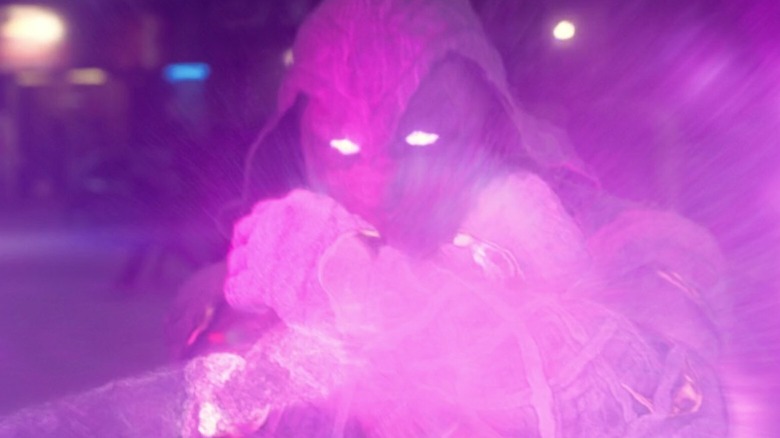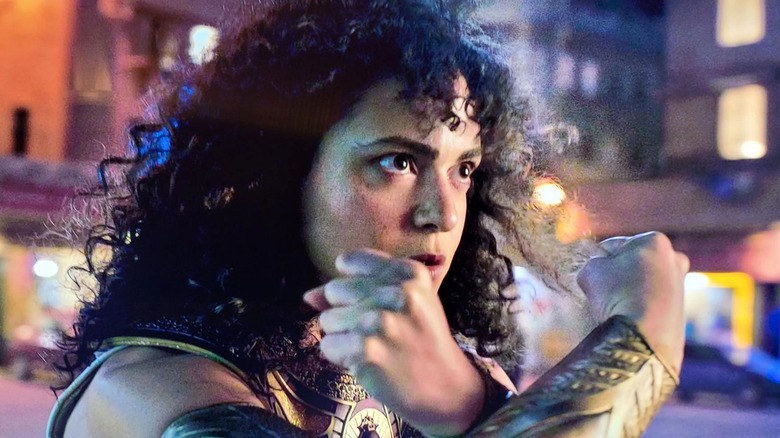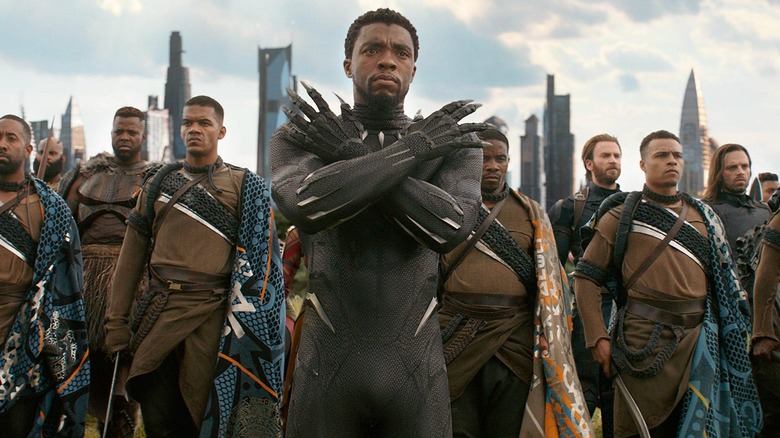The Moon Knight Finale Deepens The Show's Black Panther Connection
We may receive a commission on purchases made from links.
So far, the Marvel Cinematic Universe's Disney+ slew of shows has followed the adventures of superheroes we've already known and seen at the movies. In "Moon Knight," Marvel explores a new, deeply layered comic book character for the first time via an episodic format, giving the superhero both the time and space to evolve, as he does in the pages of Marvel Comics. Unlike other MCU properties, "Moon Knight" bears little connection to the MCU; there are no notable cameos or Easter eggs that connect it to another Marvel project. It doesn't have a post-credits scene that teases the show's definite future or works towards bringing another character into its rich, Egyptian mythology-heavy universe.
However, what "Moon Knight" does is make subtle references to "Black Panther." In the season's concluding episode, it does that a second time, when both Marc Spector (Oscar Isaac) and Layla El-Faouly (May Calamawy) are seen making the Wakandan hand gesture.
So, why is that?
Wakanda ... forever?
The "Moon Knight" finale deepens the show's "Black Panther" connection during Marc and Layla's battle against Harrow (Ethan Hawke) and Ammit. Towards the end of the episode, Layla accepts a temporary position as an avatar of Tawaret (the Egyptian Goddess of childbirth and fertility), Marc finds his way back to life from the peaceful field of reeds, and Harrow releases Ammit, who begins devouring the souls of Cairo. It's an unhinged, chaotic mess.
But during the last fighting sequence, both Marc and Layla fight tooth and nail to save the world from Ammit's wrath and are seen recreating what appears to be the symbolic Wakandan hand gesture — previously made famous by "Black Panther." In addition to the move, "Moon Knight" has already referenced the ancestral plane, aka, the afterlife, also seen in "Black Panther."
So, what is the symbolism behind the gesture?
The salute has a deeper meaning
In "Black Panther," the salute is first displayed when T'Challa is buried and travels to the Ancestral Plane to meet his father, where he wakes up with his arms crossed across his chest. The film's director, Ryan Coogler, previously revealed (via Inverse) the inspiration it, stating that the salute was crafted by taking inspiration from three things — the way Egyptian Pharaohs were laid to rest in their sarcophaguses, the nature of specific sculptures from West Africa, and the fact that the movement translated to "love" and "hug" in American Sign Language (ASL).
While it is possible that Marc and Layla made the Wakandan salute due to its apparent Egyptian connection, another possibility could be its connection to Osiris, the Egyptian God of death mentioned in the fifth episode of "Moon Knight." In the book Ancient Egypt Transformed: The Middle Kingdom, which was published in 2015, co-authors Adela Oppenheim, Dorothea Arnold, Dieter Arnold, and Kei Yamamoto assert that the crossed arms represent the loss of control of one's body in death, "an idea expressed" by the Egyptian God Osiris who was betrayed and brutally killed by his brother (via Inverse).
The gesture has become so closely associated with "Black Panther" that its appearance in any other MCU property feels like a direct reference to the show. In this case, the salute means something to both Marc and Layla, and is more than a cool-looking power move. Maybe it is intended as a connection to "Black Panther." Or perhaps it's their way of declaring war against their enemy, and is symbolic of their inevitable deaths.


